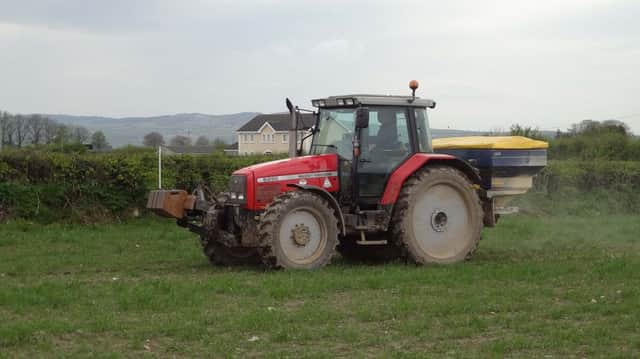DARD Management Notes: Crops


Once water subsides and field conditions allow, winter crops will need their first nitrogen (N) application to breathe life back into them. Typically winter barley should receive one third of total N during late tillering, usually before mid-March. To promote tillering in thin barley crops aim to get on sooner or increase the proportion of N applied at this early stage. Research funded by ADAS has shown that modern winter barley varieties can produce bigger yields if a higher proportion of nitrogen is applied before stem extension. However if applying extra early N, it will need to be accompanied with a more robust fungicide and PGR programme to keep the crop standing and clean from disease.
For winter wheat a third of total nitrogen before the start of stem extension is sufficient, usually around the end of March. As with winter barley if the crop is late drilled, thin or struggling sow nitrogen earlier to encourage tillering. For all winter cereals this first fertiliser application is the ideal time to incorporate at least 20 kg per hectare sulphur and to top-up remaining phosphorus (P) and potassium (K).
Advertisement
Hide AdAdvertisement
Hide AdTurning our attention to herbicides, prioritise winter barley as the few remaining grass weed herbicides effective for this crop only work on small grasses. Also cut-off dates for latest application are earlier than for winter wheat. Consult product labels carefully for cut-off dates and latest growth stages.
Disease control: Disease is already active in earlier sown crops of winter barley. These lush crops may benefit from a T0 fungicide to reduce pressure on the main T1 spray. All winter barley crops will require a robust T1 spray in late March or early April at GS 30-31 to control rhynchosporium and mildew. Keep dose rates high particularly if no T0 has been applied.
Similarly in lush winter wheat crops a T0 application of a protectant product helps reduce pressure on the T1 spray at GS 31-32 normally applied around mid/late April. If yellow rust is a threat addition of a triazole with good rust activity should help at T1.Further details to help plan your programmes, including growth stage charts and HGCA fungicide decision support charts can be found on the DARD crops homepage (www.dardni.gov.uk).
Spring barley drilling and Chlorpyrifos withdrawal: There is still time to soil sample fields before spreading slurry or farmyard manure. Soil sampling is money well spent; highlighting the P and K status of soils and lime requirements.
Advertisement
Hide AdAdvertisement
Hide AdThe only chemical control for leatherjackets, Chlorpyrifos will be withdrawn from 1 April 2016. In the absence of any chemical control pay attention to high risk spring barley fields where leatherjacket populations are high, particularly if old grass leys are being ploughed for the first time in a while. Minimise the risk of damage by drilling into a well cultivated, fine, firmly consolidated and warm seedbed where the crop can emerge quickly and grow away from the pest. Where leatherjackets are known to be a problem compensate for potential seedling losses with a higher than normal seed rate.
POTATOES
Early fertiliser: By now most fields intended for potatoes should be soil sampled. Where there is a high potash requirement it is advisable to apply immediately after ploughing, particularly if muriate of potash is the main source.
Seed preparation for planting: Attention to detail during handling and preparation of seed prior to planting can result in increased early tuber yield, whilst optimising fry colour and skin quality.
Carefully check the seed as it arrives on farm and have samples hot-boxed to determine the presence of disease and overall sprouting vigour. Treat seed with a fungicide pre-planting to reduce disease transmission and maximize marketable yield.